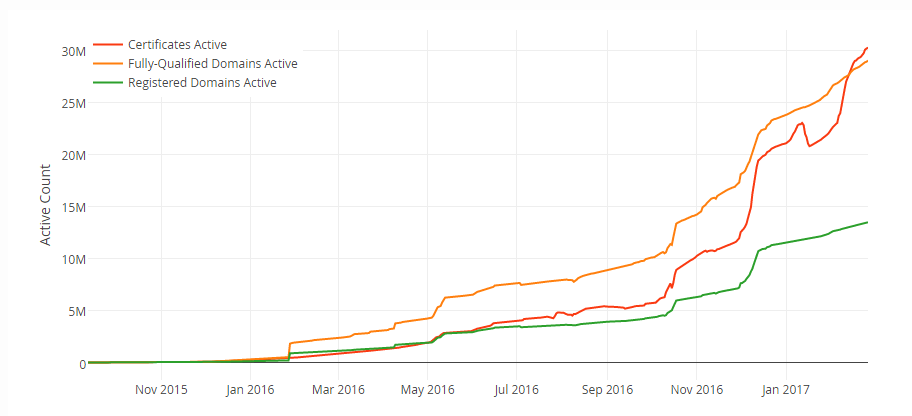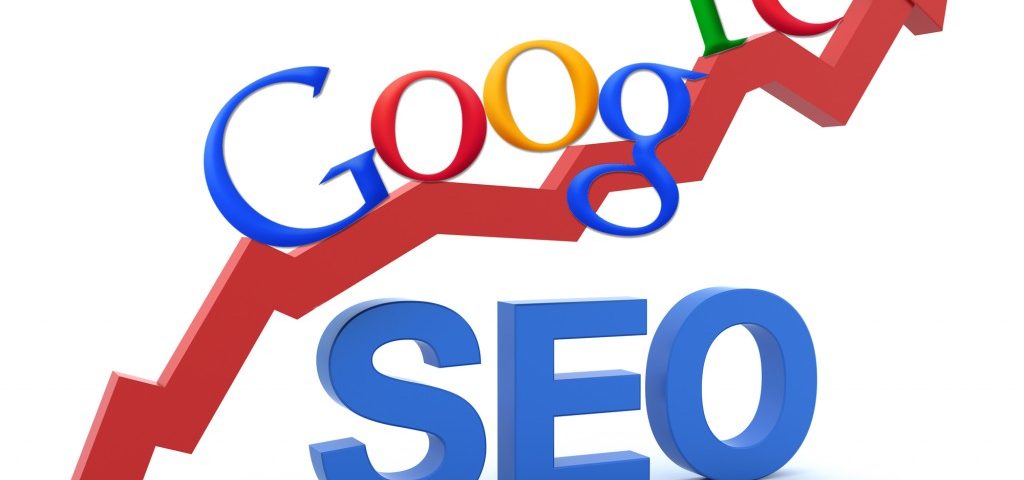
Derfor bør du SSL-sikre din side i 2017
10/03/2017
Storytelling – den ultimative guide
10/04/2018This post is also available in:
 English
English
It’s a big fat lie that Google AdWords has no effect on SEO rankings and that they cannot bring in more organic traffic. AdWords definitely do, if applied intelligently.
This goes especially for pages that aren’t ranked for the right keywords yet. It goes for new pages, recently optimized pages and product and service pages that never got the attention in Google you hoped for.
In this post I’ll show you how to rank these low traffic pages through Google AdWords. Often, you can’t rank them by AdWords alone. Still you lay the groundworks for very effective SEO with AdWords – and take a good long leap forward in your online marketing.
To be sure, you don’t need to keep paying for ads once you’ve used them for SEO. After doing so, keep the best and throw the rest away. Let them all go if you please – and if it’s more profitable for you.
Here is how it works:
The abracadabra is search engine signals and UX statistical significance.
I’ll explain in detail. First, a recap on what is already written on possible AdWords impact on SEO.
AdWords impact on SEO – what we already know
SEOs have explained how to use Adwords as an important ingredient in organic keyword analysis. In fact, AdWords can help you create the perfect keyword analysis, because it’ll give you all the correct data on search volume, conversion rate etc. There is no tool out there – not even Google Keyword Planner – that will do that for you.
Use the AdWords data to predict the revenue landscape after your url reaches page 1.
And look here how Adwords can affect brand awareness and increase brand searches.
In an edition of Whiteboard Friday (feb. 2017) Rand Fishkin from Moz has some input on the subject: How Google AdWords (PPC) Does & Doesn’t Affect Organic Results – Whiteboard Friday
What I want to talk about though is how AdWords will actually raise your rankings on low traffic pages. I’ll show you how to use AdWords to SEO the product and service pages on your website that are often very hard to build links to and to rank on the right keywords.
It’s actually quite simple.
AdWords help Google index your content
Google’s primary advice for SEO’s and online publishers is:
Focusing on the user means serving relevant content to the people using Google Search.
Google wants to ‘understand exactly what you mean while searching and give you back exactly what you want’ – as Co-founder, Larry Page puts it.
Naturally, it’s not that you automatically get better rankings simply by purchasing AdWords, but you can use Adwords to signal Google on what searches are relevant to your content – and position the content accordingly.
Consider the enormous amount of content that Google crawls and indexes on a daily basis. If you help the Google Crawlers do their job and focus on the end-user (e.g. write good content), you’ll position your pages very well on the most profitable and authentic keywords to your business.
At least you’ll take a huge and most often very cost effective step towards that page 1 exposure.
… Here are the details:
Signal Google as much as you can
Most SEO’s agree that SERP (Search Engine Result Page) or Organic CTR (Click Through Rate) and Dwell Time are super important ranking factors.
When Google determines whether you’re eligible for a top ranking on a query, you fail if too few people click your link while scrolling down the SERP. You’re not catchy enough … not interesting.
You fail too, if people leave your page and return to Google within too short a time span. You didn’t give ‘em what they were looking for.
On the other hand, when Google notices searchers clicking and taking their time on your website and not returning to Google straight away – you’re rewarded.
Now from here I’d like to do a little speculation: I haven’t had the chance to read Google’s terms of business when it comes to data mining. I suspect though, that Google didn’t supply God knows how many millions of websites with Google Analytics for the fun of letting everybody analyze their traffic for free.
Google Analytics (GA) is the perfect data mining machine. I think it was at least in part conceived as such by Google from the beginning – don’t you?!
Why wouldn’t Google use GA data to form an idea of user experience on the sites they do their best to rank?
Google may not have GA-access to all sites in their index, but surely, they have algorithms to compare and generalize. The more than 30 million websites actually running GA creates a mighty fine basis.
Now if Google Analytics shows that people are clicking internal links on your website, that they are scrolling and using the required time to read and view the content you offer – the search engine will judge that people seem to dig what you offer.
Your content seems valuable to users – especially to those typing in this or that query in Google.
… And even if Google isn’t using GA data as a ranking factor – Organic CTA and dwell time alone seems to indicate quite heavily to what degree the visitor is interested in the content you serve.
CTA and dwell time certainly make sense as ranking factors – also considering the organic results, you’ll notice when shooting a low-traffic-though-well-optimized page with clicks from a narrow and targeted AdWords campaign.
Doing so will establish a CTA and dwell time that can be trusted by Google with statistical significance – thereby an actual positive or negative factor for ranking your content on the search queries in question.
What is statistical significance?
The fact that the result is “statistically significant” means that it is supported by an experiment that shows there is less than, for example 5 percent risk that the data is random.
In pharmaceutical research most scientists work with a significance level of p <0.01 or less – that is, with 1 or less than 1 percent risk of the outcome being random. In finance researchers are often satisfied with a significance level of p <0.1 – that is, 10 percent.
Nobody except Google knows the significance levels Google applies when determining SERP, but judging from common sense I think it’s safe to say that Google Search does rely on some criteria of statistical significance.
How else would you have an unconscious machine like a search engine read user intent from billions of queries and pair them with relevant content?
Statistical significance establishes user intent
How would you program a computer to read minds?
Well – in order to determine user intent and the relevance of a page to an individual query, statistical significance has to be applied.
You cannot conclude anything on the basis of one user that seems satisfied finding a webpage with a certain query. But if all or a large percentage (of searchers using the query) do, the conclusion is straightforward. Indeed, you’ll get a better and better idea of intent as the pool of users exhibiting that ‘satisfied behaviour’ grows.
AdWords enable you to build that pool and feed your page the exact search traffic it needs for Google to calculate statistical significance in regards to queries that are valuable to your business.
You can use AdWords to signify statistically that users love what you publish and that you need to be found in top of the SERPs on these specific search queries.
You don’t need to wait half a year – while building social buzz and backlinks – for Google to pay attention to your content and collect the data it needs to rank you on whatever queries.
Write good content – preferably excellent content. Shoot it with AdWords. As you onpage optimize according to incoming ads data, your content will position itself in SERP where it belongs – sometimes in just a matter days.
When to use the technique?
This method should be used when you have made a landing page for a good competitive product or service – something you really believe in.
Product and service pages are often hard to build links to, because they are strictly commercial. The method comes in handy here. It’s a way of showing Google that these pages are read, watched or otherwise taken in by searchers using the queries you wish to rank for.
If applied correctly, AdWords can help you show Google that your page meets the intent expressed in the user’s query. If enough traffic is directed to the page, Google will decide user intent on the grounds of statistical significance.
When NOT to use the technique?
To repeat, the method establishes the relevance of your page to certain queries expressing a certain user intent.
No more and no less.
Once you have established that the content is relevant to the queries the next step isn’t more AdWords – rather it’ll be building links, brand awareness, social signals, reviews etc. – recommendations that puts your content above other equally relevant publishers.
If your page since long has been well optimized and you’re already ranked somewhere on page 1 or even page 2 or 3 in a competitive environment, this use of AdWords probably won’t have any effect.
It works to the extent that Google isn’t fully acquainted with your content – that Google doubts whether the content is actually relevant to certain queries. Google needs traffic to form that judgement. Statistical significance needs a certain amount of data to be established.
That’s why this is a lift off technique for low traffic pages – new pages and older ones that haven’t been successful yet and optimized until recently.
How to use AdWords to rank pages
There are many ranking signals you can send Google using AdWords:
If you set up a narrow and targeted campaign, you can show Google the precise words you think you’re eligible to rank for.
Use negative keywords to limit misinterpretation.
Test the title tags in your ads for CTR and conversion and look at your quality score to get an idea of how well your onpage optimization is carried out for the different sets of keywords.
Setup rank tracking and test keyword SERP and conversion. It’s fairly easy to see which clusters of keywords are low hanging fruit. It’s also easy to onpage re-optimize according to incoming data.
An example
First and foremost I’m a danish Copywriter.
When I do SEO it is mostly Onsite SEO or outreach (link building) on product and service pages. So far I’ve used this method for 7 clients. 6 of them, it has worked for. The last one I’m still working on.
I’ve also used it on my own service pages – for example on my page promoting new websites for Danish small bizz.
One of the queries I have succeeded in ranking for is ‘Ny hjemmeside’ (new website). This is a relatively competitive word.
Currently I’m #5 in the country and I have reached the position simply by writing good and thorough content. Then I’ve optimized it and shipped it a small amount of AdWords traffic from searchers using the queries, I tried to rank for. I have re-optimized according to incoming data and SERP positions.
As I got to page 1, I was also able to direct a few incoming links to the content. That helps of course, but it’s also another story.
Set up Adwords for better ranking on low traffic product and service pages
- Find the keywords that look the most attractive (use money keywords – specific keywords pointing to a user intent far along customer journey).
- Optimize the page you want to rank accordingly.
- Set up an AdWords campaign with ad groups using your keywords – apply negative keywords etc. Signal Google as heavily as you can as to the search terms that should show you link in SERP)
- Write AdWords ads using your keywords. Match them to the title tag and the content of your landing page. Remember to check the quality score of your ads. It indicates how well your page is optimized for the keywords you target.
- Run the campaign and wait.
- Adjust according to the data you receive. Wait and see how your content crawls the SERP ladder.
Well, then. You’ve reached the end.
What do you think now?
Any experience using the trick?
What are your thoughts on Google Analytics as a tool for UX data mining?
Any criticism, comments or questions?
Please – give us your thoughts!




